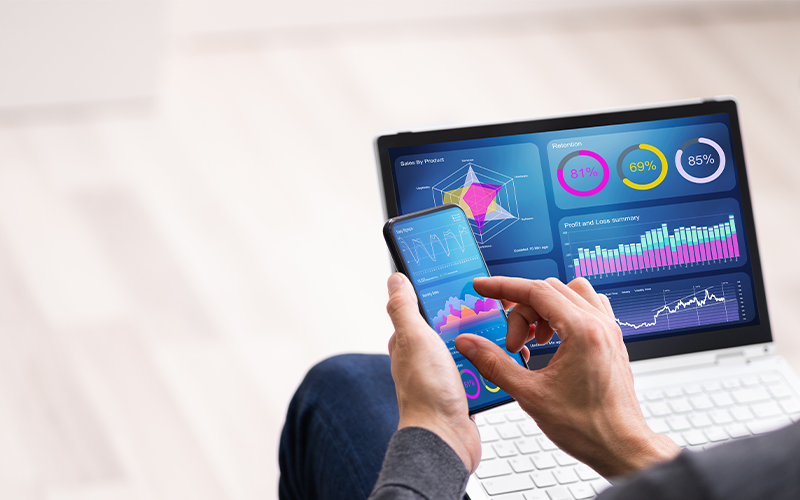Spend Analytics
A complete guide to spend analytics
A profitable business is the one that manages its spend wisely. Although businesses focus proactively on customer satisfaction, procurement and cost management are few of the oldest and most vital business functions in any organisation. The global spend analytics market value of $1.61 billion could reach $4.33 billion between 2021 and 2026, at a CAGR of 17.9%. With that in mind, it is easy to extrapolate that strategic sourcing and spend analytics are critical functions that must be balanced along with customer satisfaction, quality control, and profit optimisation.
What is spend analytics?
A business can make well-informed procurement decisions when it invests in comprehensive spend analytics. Spend analytics deals with integrating, processing, and analysing a company's procurement data to deliver key insights into its purchase patterns and resource optimisation. Spend analytics tools methodically investigate spend data, supplier hierarchies, inventory history, commodity alignment, and purchase amount. These tools provide a structured front-end interface to the end user. Essentially, spend analytics provides procurement teams insights into critical spend metrics by answering questions such as:
- Which categories require the most and the least spend?
- What are the company's purchase patterns for the past few years?
- Who are the suppliers for different spend categories? How many of them are critical to the company?
- What is the administrative overhead?
- Which category indicates risks in terms of costs and supply?
The elements of spend analytics
The central goal of spend analytics is to determine cost-savings opportunities, enhance Strategic supplier relationships, improve sourcing, and lower procurement costs. Spend analytics achieves this through an extensive framework comprising three major segments:
Spend database:
The most important part of a spend analytics solution is data. The database is generally created from invoices, spend history, inventory data, and vendor information. Compact and detailed spend data, including KPIs and other metrics, can offer a multifaceted perspective on the company's spend.Spend analytics:
Another paramount component of spend analytics is the analysis and visualisation of procurement data. Through analysis, enterprises can devise ways to limit costs and enrich back-end processes for improved results.Procurement process optimisation:
The outcomes of Spend analytics in procurement can be utilised for further optimisation of purchase processes to improve future procurement performances. Companies can develop better strategies to meet short-term and long-term business goals.
The importance of spend analytics
A compendious spend analytics framework can generate tremendous value and profitability for a business. Using spend analytics, an organisation can:
Monitor and optimise procurement patterns:
Typically, companies spend about 40–80% of their total costs on external procurement. With a well-crafted spend analytics solution, businesses can gain valuable insights into their spend patterns, amounts, and potential cost-saving opportunities.Strategise efficient procurement and spend practices:
Spend analytics makes purchase data more accessible for category managers via user-friendly interfaces and visualisations such as dashboards, charts, and tables. With a multidimensional view of the company's spend patterns, managers can identify the aspects that demand attention. Furthermore, they can strategise solutions to improve the company's spend practices and overall financial health.Foster long-term relationships with suppliers and vendors:
Spend analytics helps companies maintain end-to-end spend transparency, which can further highlight the least and the most beneficial supplier relationships in terms of spend amount, quality, and quantity. With these insights, companies can strengthen their supply chain by reducing the number of suppliers and nurturing long-term relationships with essential vendors. Procurement departments can also effectively reduce administrative overheads and enjoy competitive prices and improved payment terms.Streamline supply chains and enhance long-term capabilities:
Understanding organisation-wide and category-specific spend patterns can help companies improve their supply chain processes with long-term goals. Procurement departments can optimise their processes for internal and external stakeholders, vendors, and institutional bodies. Spend analytics can also help identify and analyse past patterns to limit errors.
For organisations on the digital transformation journey, agility is key in responding to a rapidly changing technology and business landscape. Now more than ever, it is crucial to deliver and exceed organisational expectations with a robust digital mindset backed by innovation. Enabling businesses to sense, learn, respond, and evolve like living organisms, will be imperative for business excellence. A comprehensive yet modular suite of services is doing precisely that. Equipping organisations with intuitive decision-making automatically at scale, actionable insights based on real-time solutions, anytime/anywhere experience, and in-depth data visibility across functions leading to hyper-productivity, Live Enterprise is building connected organisations that are innovating collaboratively for the future.
How can Infosys BPM help?
Our spend analytics services incorporate tools such as enterprise-grade AI, spend classification, and opportunity identification to offer strategic insights into your company's procurement ecosystem for enhanced spend management. Our intelligence combined with our Procurement and spend analytics technology can help overcome your business challenges and sustain your company's revenue and profitability. Our spend analytics framework includes the following solutions:
- Data ingestion, cleansing, and de-duplication
- Spend classification
- Actionable insights and opportunity identification
- Other features such as a KPI scorecard, root-cause analysis, and mix-and-trend dashboards







